Anna Claypoole Peale, born in 1791, came from an accomplished family of artists. Her uncle was the famous Charles Willson Peale and her father, James Peale, had been trained by his older brother and was an accomplished painter of miniatures and, later on, of still lives. (Unlike her cousins, Anna avoided the pressure of being named after an artist–Charles Willson Peale named his sons things like Raphael and Titian and one of his daughters was Angelica Kauffmann Peale).
Anna’s own artistic prowess was recognized early; her father gave her artistic training and she sold her first paintings when she was only fourteen. She exhibited at PAFA beginning in 1814 and, along with her sister Sarah Peale, was elected to the Academy in 1824, the first two women to be included. Like her father, she eventually specialized in miniatures;Charles Willson Peale took her to his Washington studio in 1818 to further her career, and by the 1820s she had a thriving practice in Baltimore and Philadelphia. Miniatures were very popular in the early 19th century; less expensive and more portable than full scale oil paintings they provided an accessible and intimate way to own a likeness of a loved one.
The Rosenbach owns four examples of Anna’s miniatures:
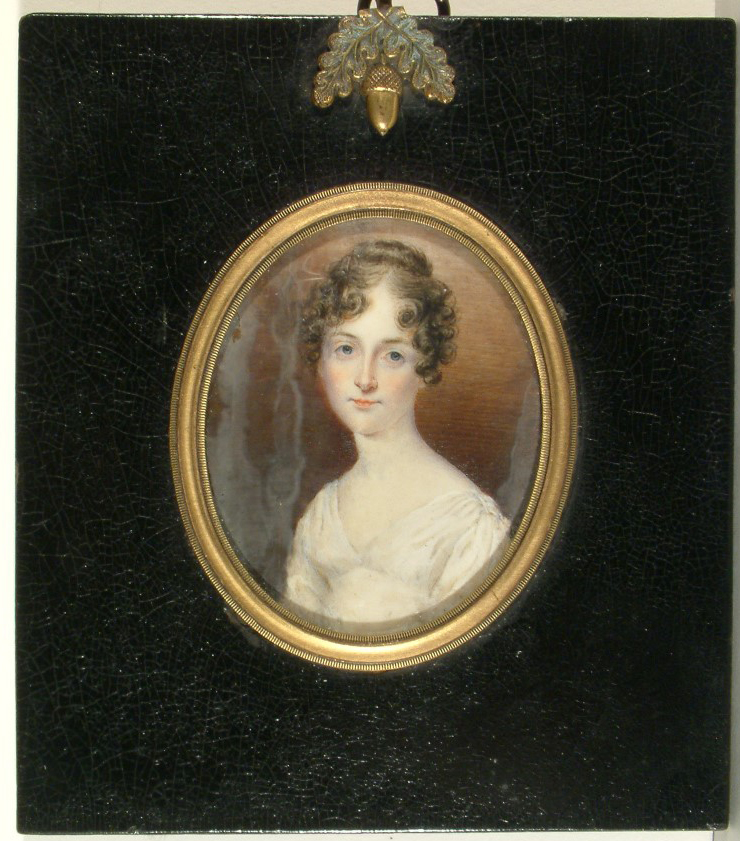
This miniature is of Julia Rush Williams, of the famous Philadelphia Rush Family. (The Rosenbach also has a great collection of papers relating to the Rush–Williams-Biddle families). The miniature is watercolor on ivory, which was the standard medium used for miniatures in the 19th century, and is set in a typical frame with an acorn-and-leaf hanger.
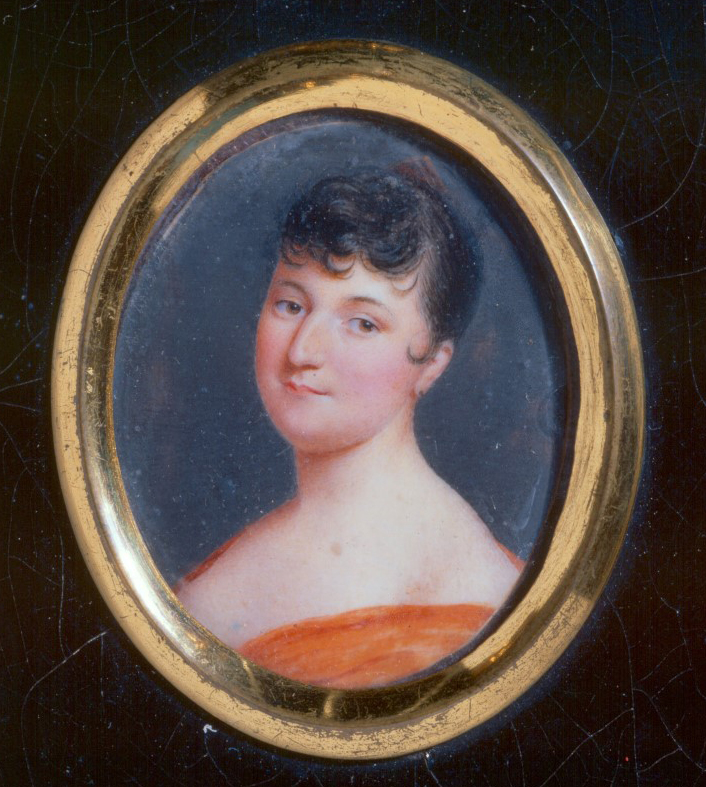
This is a close-up of a portrait of Sally Etting, which is in the same type of frame as the Williams portrait. Etting was from a prominent Baltimore Jewish family (which intermarried with the Gratzes) family and she also had her portrait painted by Thomas Sully. Our portrait was originally thought to represent Rebecca Gratz, but similarities to the Sully portrait of Etting led to a reattribution.
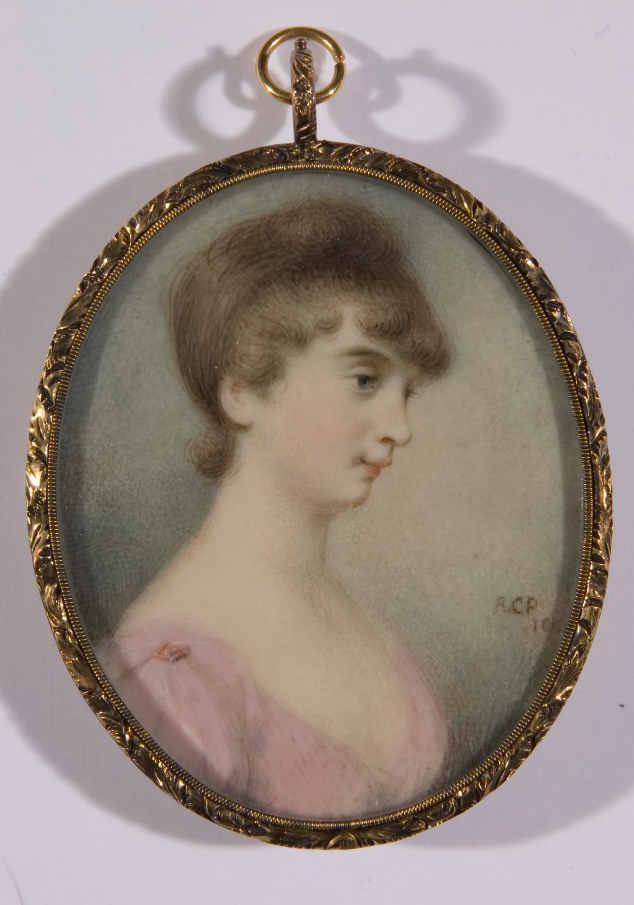
We don’t know the sitter for this portrait, but the signature of the artist is very clear at the center right: ACP. The reverse of this miniature’s frame is also lovely and contains a fragment of fabric, possibly from the dress the sitter is wearing in the portrait.
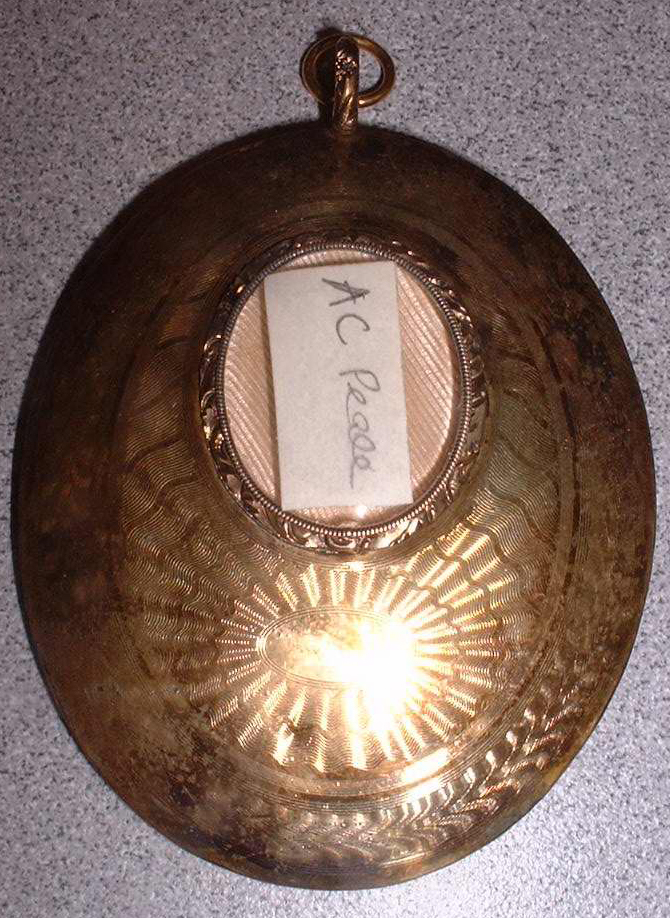
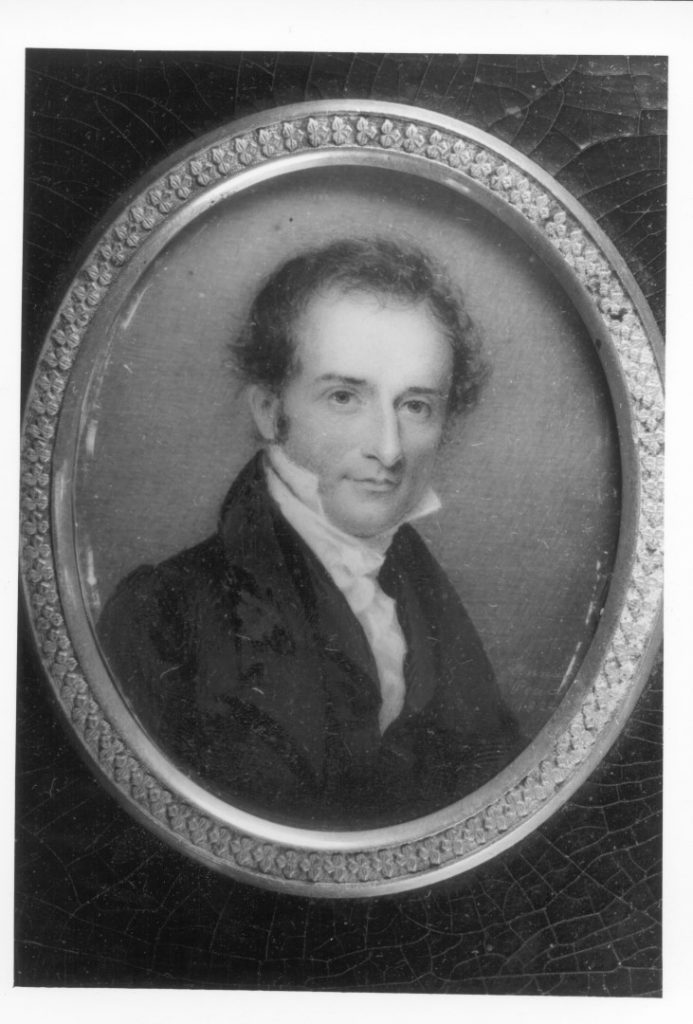
The last miniature is our only male sitter by Anna Claypoole Peale. The sitter is Abraham Sellers, who is probably a relative of Coleman Sellers, Sophonisba Peale’s husband (Sophonisba was Anna’s cousin). The signature “Anna C. Peale 1824” is scratched in at the lower right.
